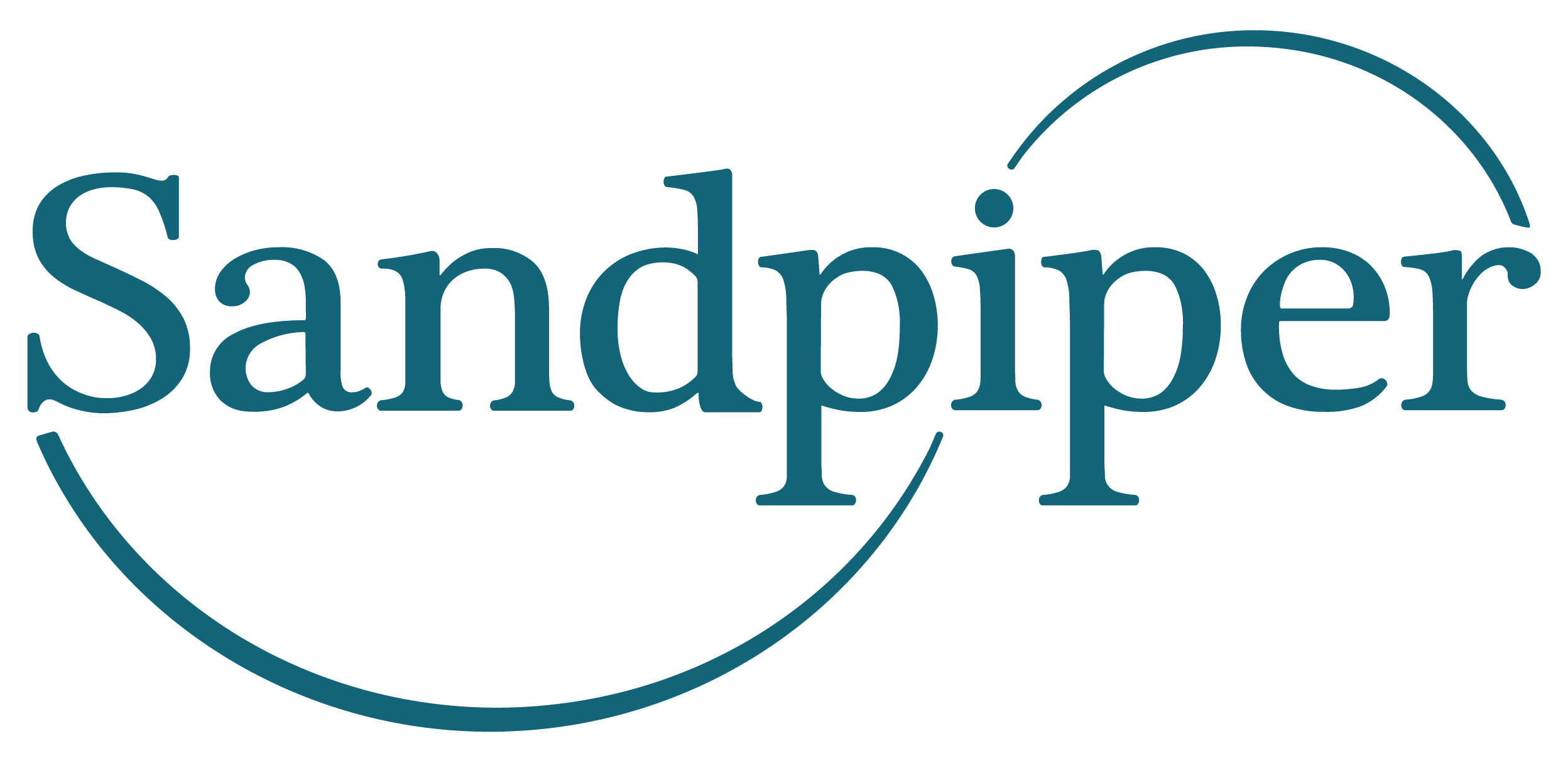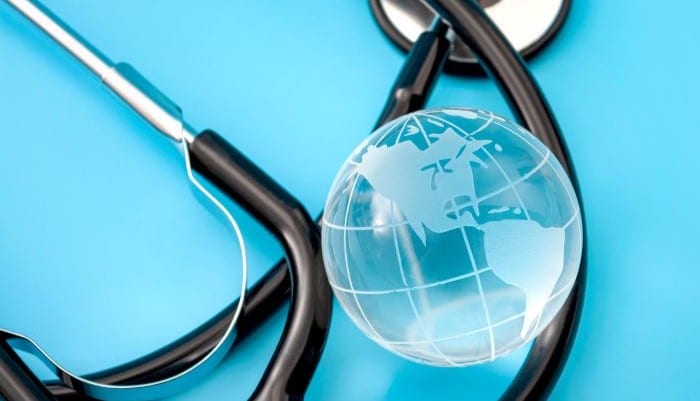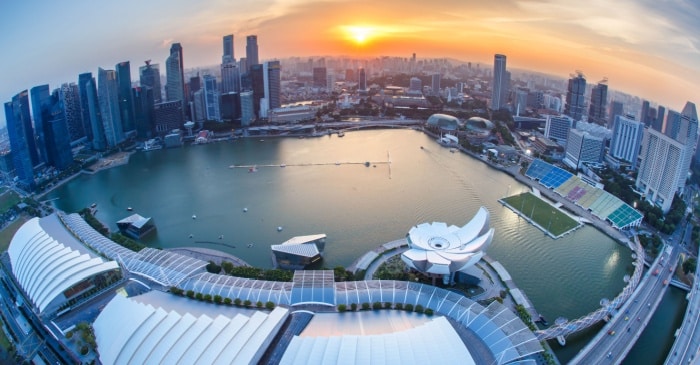
Mastering Public Affairs and Government Relations: Singapore

A Pivotal Moment as South Korea’s Legislative Election Approaches
Is Asia Pacific on Track to Achieve the SDG 3?
March 2024

This article was contributed by the Sandpiper Health content team. Sandpiper Health is a specialist consultancy under Sandpiper Group, providing in-depth monitoring and analysis of the healthcare and life science sector, and helping pharmaceutical and medical technology companies, healthcare providers, patient and caregiver groups, as well as investors and professional organisations formulate effective stakeholder engagement strategies to achieve their business and communications objectives. To receive regular insights from Sandpiper Health on healthcare trends and policy updates in Asia Pacific, sign up to Asia Pacific Healthcare Outlook Monthly Newsletter.
In 2015, the United Nations set forth an ambitious agenda known as the Sustainable Development Goals (SDGs), a universal call to action aimed at ending poverty, protecting the planet, and ensuring that all people enjoy peace and prosperity by 2030. Comprising 17 interlinked goals, this blueprint for a better and more sustainable future addresses the global challenges we face, including those related to poverty, inequality, climate change, environmental degradation, peace, and justice.
Among these goals, healthcare plays a pivotal role, underlined by SDG 3, which aims to ensure healthy lives and promote wellbeing for all at all ages. This goal underscores the importance of health in achieving economic prosperity and sustainable development, recognising that a healthy population is fundamental to building resilient societies and economies.
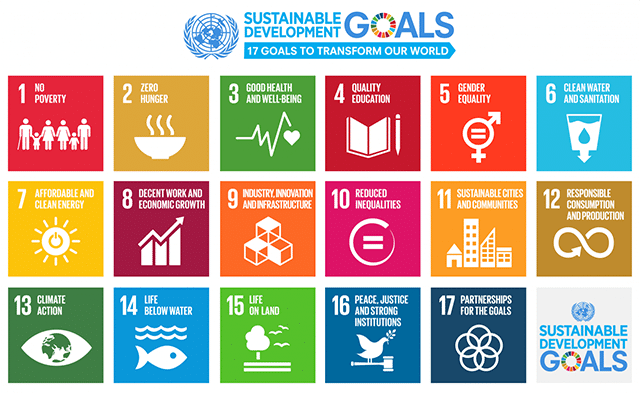
Asia Pacific’s progress towards the 17 SDGs
According to the UN Economic and Social Commission for Asia and the Pacific’s (ESCAP) 2024 SDG Progress Report, the Asia-Pacific region is lagging 32 years behind reaching SDGs by 2030. This delay is mostly attributed to persisting gender inequalities and the vast rural-urban divide. In several regions, women still struggle to access education, whereas rural and remote residents lack access to clean water and proper sanitation. The COVID-19 pandemic further set back progress in economically vulnerable nations, particularly in Least Developed Countries (LDCs), Landlocked Developing Countries (LLDCs), and Small Island Developing States (SIDS), as illustrated in the graph below:
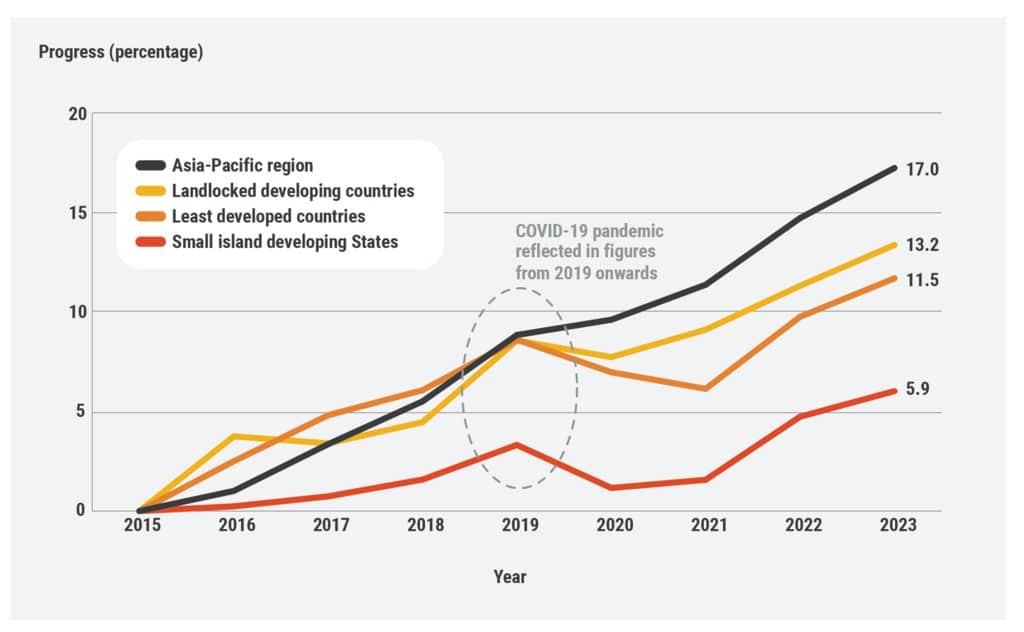
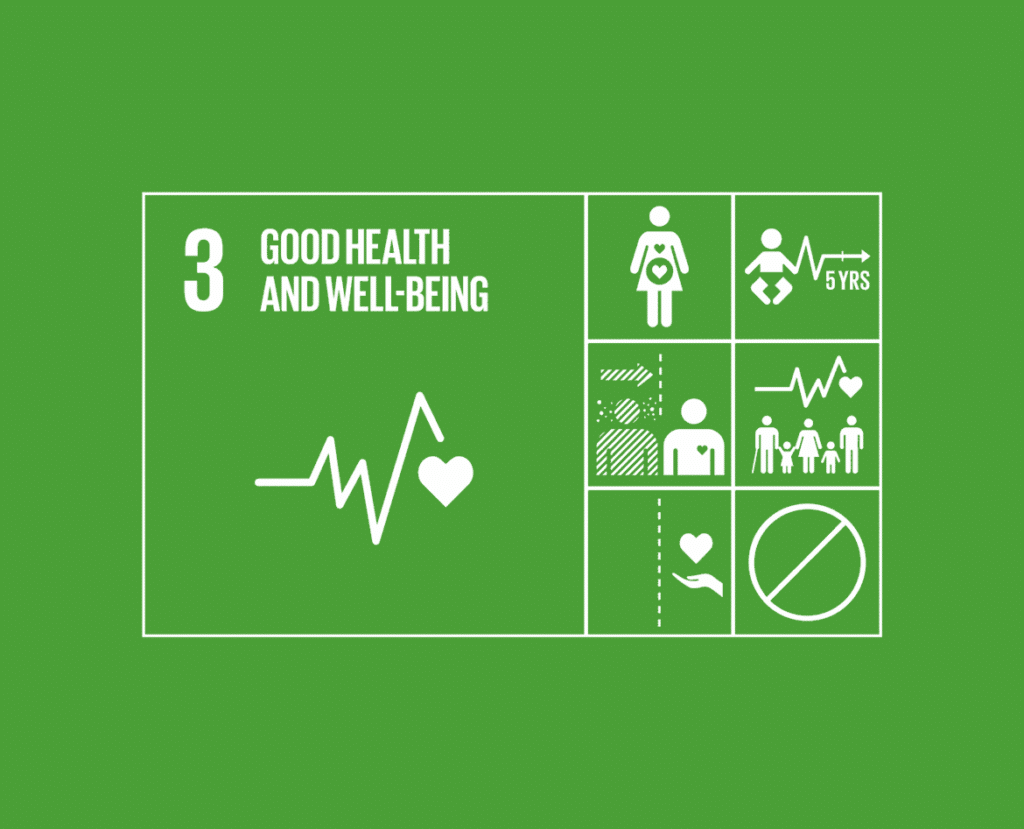
Among the SDGs, Asia Pacific’s top performers were SDG 1 (No Poverty) and SDG 9 (Industry, Innovation, and Infrastructure). In contrast, SDG 13 (Climate Action) was the only goal that saw regression between 2015 and 2023. Greenhouse gas emissions continue to rise, and insufficient funds are set aside to combat climate change in a region that can least afford it. A person in Asia Pacific is six times more likely to be affected by extreme weather events than someone living outside it, with catastrophic economic repercussions.
For SDG 3, strengthening healthcare systems in Asia Pacific is becoming increasingly urgent, particularly as the region faces population ageing and a rise in non-communicable diseases (NCDs). Unfortunately, progress on several targets is insufficient.
Appraising SDG 3 targets in Asia Pacific
Each SDG is evaluated based on progress made towards a variety of targets. The graphic below showcases the various ones that have been set for SDG 3. This section highlights several targets and evaluates their progress across the Asia Pacific region.
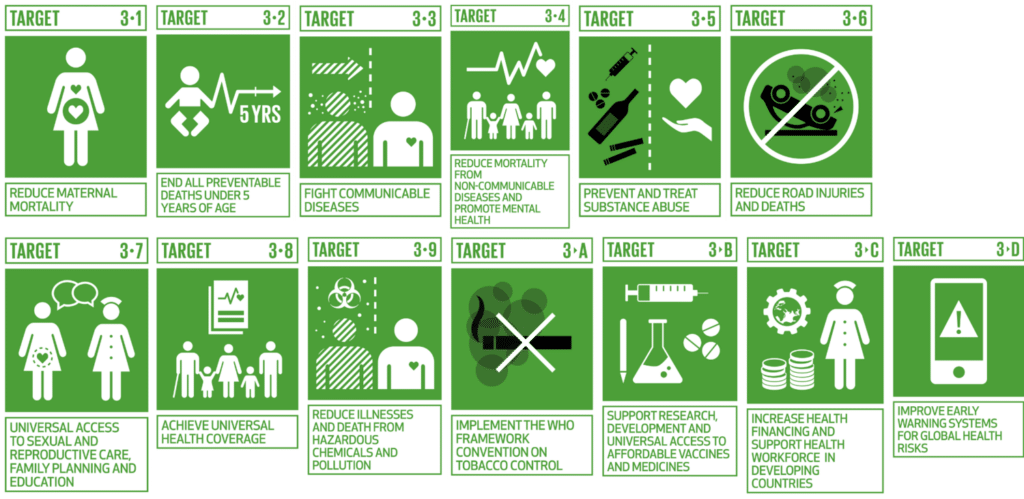
Maternity and child health
In the Asia Pacific region, notable strides have been made towards improving maternal and newborn health, reflecting positively on SDG targets 3.1 and 3.2, which aim to reduce maternal mortality and end preventable deaths of newborns and children under five, respectively.
- Target 3.1- Reduce Maternal Mortality
- A report by the Asia-Pacific Knowledge Management Hub highlighted that by 2017, 27 out of 58 countries had achieved the SDG 3.1 target of less than 70 maternal deaths per 100,000 live births, thanks to improved prenatal and obstetric care and skilled birth attendance.
- Still, countries like Afghanistan, Myanmar, Nepal, and Lao PDR continue to struggle to meet the maternal mortality ratio target set by target 3.1 due to insufficient access to emergency obstetric care, particularly in rural and marginalised communities.
- Target 3.2- End All Preventable Deaths Under 5 Years of Age
- The region is on track to meet the SDG 3.2 target for reducing neonatal and under-five mortality rates by 2030.
- However, the pandemic significantly disrupted childhood vaccination practices across Asia Pacific. According to the Organisation for Economic Co-operation and Development (OECD), by 2021, only 75 percent of children in lower-middle and lower-income countries had received measles, diphtheria-tetanus-pertussis (DTP3), and hepatitis B vaccines by age one, which is 10 percent lower than in 2019. More work will need to be done to rebalance these figures.
To bridge these gaps and achieve SDG 3.1 and 3.2, Asia Pacific countries must further bolster childhood vaccination and midwifery education, as well as increase the workforce of skilled health personnel, ensuring widespread access to essential maternal and newborn care services. Additionally, they must emphasise comprehensive emergency obstetric care, including timely access to caesarean sections, and prioritise the continuity of antenatal, childbirth, and postnatal services, which will be pivotal in securing the health and wellbeing of mothers and children across the region.
Improve wellbeing
With consumer habits and demographics changing quickly, lifestyle-related diseases and conditions are on the rise in Asia Pacific. Overall health and wellbeing are addressed by several targets, including 3.4 and 3.A, which can help reduce disease burden.
- Target 3.4- Reduce Mortality from NCDs and Promote Mental Health
- This target aims to reduce mortality in these areas by one-third by 2030. According to the World Health Organization (WHO), as of 2022, six of the top ten countries in the world with the highest probability of premature death from NCDs are in the Pacific, a grave situation of international concern. China, India, Pakistan, and Indonesia are in the top five countries in the world for total population of people with diabetes. Problems such as these are expected to continue to grow across the region.
- One indicator of Target 3.4 is the suicide mortality rate. A key market that Asia Pacific region is eyeing in this regard is South Korea, which has the highest suicide rate among all developed countries. Its adolescent suicide mortality rate is 6.5 per 100,000 people as of 2020. To tackle this issue, South Korea’s Ministry of Education is providing various campaigns, such as suicide prevention education and early suicide detection systems, to protect students and children from suicide.
- Target 3.A- Implement the WHO Framework Convention on Tobacco Control
- This targetis measured through the age-standardised prevalence of current tobacco use among persons aged 15 years and older. Notably, Southeast-Asian countries such as Singapore are proactively strengthening tobacco control through the National Tobacco Control Programme (NTCP). The government programme has implemented taxation, public education, and tobacco control legislation, contributing to a steady decline in smoking rates from 13.9 percent in 2010 to 10.1 percent in 2020.
To make further progress in these critical areas, it is imperative for countries in the Asia Pacific region to intensify their efforts in public health education, implement comprehensive policies targeting lifestyle-related risks, and ensure that mental health services and tobacco control measures are more accessible and effective.
Healthcare access and financing
Access to quality healthcare and the financing of health services are crucial pillars in the journey towards achieving Sustainable Development Goal 3 (SDG 3) in the Asia Pacific region. The emphasis on universal health coverage (UHC), encapsulated in Target 3.8, along with the support for research, development, and universal access to affordable vaccines and medicines, outlined in Target 3.B, are central to ensuring that all individuals, irrespective of their socioeconomic status, have access to the care and treatments they need.
- Target 3.8- Achieving UHC
- UHC is a critical component of SDG 3, aiming to ensure that everyone, everywhere, can access essential, quality health services without suffering financial hardship. In the Asia Pacific, strides towards UHC have been notable, with several countries expanding their health insurance schemes to cover larger segments of their populations.
- Overall, Asia Pacific has made progress on the Universal Health Coverage Service Coverage Index (SCI), which points to essential health service coverage. However, in many countries, including those with large populations such as China, India, Indonesia, Pakistan, and Japan, out-of-pocket payments have increased as a percentage of total health expenditure in recent years.
- Target 3.B- Support Research, Development, and Universal Access to Affordable Vaccines and Medicines
- The COVID-19 pandemic underscored the importance of Target 3.B, highlighting the urgent need for robust healthcare R&D and equitable access to lifesaving vaccines and medicines. The Asia Pacific region has seen a significant mobilisation in response, with countries like India and China playing pivotal roles in the global supply of COVID-19 vaccines.
- Beyond the pandemic, there is a growing emphasis on strengthening local pharmaceutical industries, enhancing regional cooperation in healthcare R&D, and ensuring that patent laws and trade policies facilitate rather than hinder access to essential medicines. Moreover, the pandemic has accelerated initiatives to build regional capabilities in vaccine production and distribution, aiming to secure the Asia Pacific’s resilience against future health crises.
- Target 3.C.1- Increase Health Financing and Support Health Workforce in Developing Countries- Health Worker Density and Distribution
- Inequalities in different regions’ health worker density persist as physicians, midwives, and nurses migrate from developing to developed countries and from rural to urban areas in search of better salaries and work conditions.
To continue advancing towards these targets, it is essential for Asia Pacific nations to foster partnerships across the public and private sectors, invest in healthcare innovation, and prioritise policies that support the scaling of health services and interventions. Ensuring that financing mechanisms are inclusive and equitable will be key to achieving universal health coverage and sustaining the region’s health R&D ecosystem.
Looking ahead
Healthcare MNCs are well advised to monitor the progress of SDG 3 in jurisdictions across the Asia Pacific region. Firms active in the sector are uniquely positioned to contribute to the realisation of SDG 3 by innovating in healthcare delivery, improving access to quality care, and leveraging partnerships that drive progress toward universal health coverage and improved health outcomes. As such, engaging with SDG 3 is a rewarding business opportunity for healthcare companies in the Asia Pacific, enabling them to align their growth objectives with sustainable development and societal wellbeing
